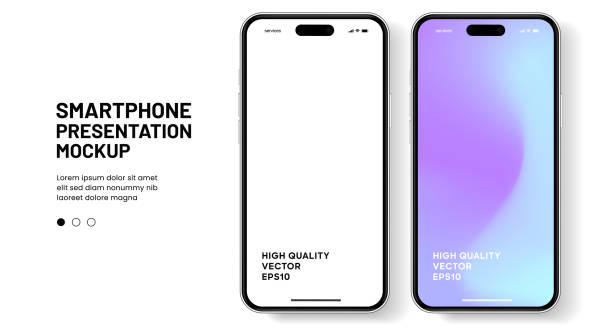Tablets: Bridging the Gap Between Portability and Productivity
In the era of digital mobility, tablets have emerged as versatile devices that seamlessly blend portability with productivity. These compact, touchscreen-enabled gadgets have become ubiquitous in various settings, from classrooms to boardrooms, transforming the way we consume content, work, and stay connected. This exploration delves into the evolution, key features, impact on daily life, challenges, and future trends of tablets.
Evolution of Tablets: From Concept to Ubiquity
While the concept of tablet-like devices has been present in science fiction for decades, it wasn’t until the early 21st century that technology advanced sufficiently to bring tablets into reality. The release of the Apple iPad in 2010 marked a turning point, introducing a sleek and intuitive device that captured the imagination of consumers. Other tech giants quickly followed suit, contributing to the proliferation of tablets across the market.
Key Features and Components
Tablets boast a set of features and components that distinguish them from other devices. Here are some key elements:
- Touchscreen Interface: The hallmark of tablets is their touchscreen interface, which allows users to interact with the device using gestures like taps, swipes, and pinches. This intuitive interface simplifies navigation and enhances user experience.
- Operating System: Tablets run on various operating systems, with iOS (Apple), Android (Google), and Windows being the most prevalent. The operating system dictates the user interface, app ecosystem, and overall functionality of the tablet.
- Apps and App Stores: A vast array of applications, or apps, is available for tablets, catering to diverse needs such as productivity, entertainment, education, and more. App stores provide a centralized platform for users to discover and download these applications.
- Processing Power: Tablets are equipped with processors that vary in power and efficiency. High-end tablets often feature processors capable of handling demanding tasks like gaming and video editing, while entry-level tablets are designed for everyday use.
- Connectivity: Tablets support various connectivity options, including Wi-Fi and cellular data. This connectivity enables users to access the internet, download content, and stay connected while on the go.
- Camera: Tablets typically have front and rear-facing cameras, allowing users to capture photos and videos. The camera functionality is utilized not only for photography but also for video conferencing and augmented reality applications.
- Storage: Tablets come with varying storage capacities, typically ranging from 16GB to several hundred gigabytes. Some models also support expandable storage through microSD cards, providing users with ample space for apps, media, and documents.
- Design and Form Factor: Tablets come in various sizes and designs, ranging from compact and lightweight models to larger devices with more substantial screens. The form factor contributes to the device’s portability and user preferences.
Impact on Daily Life
Tablets have significantly impacted the way we live, work, and entertain ourselves. Here are some key areas of impact:
- Mobile Productivity: Tablets have become essential tools for mobile productivity. Whether used for business presentations, note-taking in meetings, or working on the go, tablets offer a portable alternative to traditional laptops.
- E-Learning and Education: Tablets have revolutionized education by providing interactive and multimedia-rich learning experiences. Educational apps, e-books, and interactive content have transformed the way students engage with academic material.
- Entertainment on the Go: Tablets serve as portable entertainment hubs, allowing users to stream movies, TV shows, and music. The immersive displays and powerful speakers enhance the entertainment experience, making tablets popular choices for media consumption.
- Digital Art and Creativity: Tablets, especially those with stylus support, have become indispensable tools for digital artists and creatives. Drawing, sketching, and designing on a tablet offer a tactile and responsive experience.
- Communication and Social Media: Tablets facilitate communication through various channels, including email, messaging apps, and social media platforms. The larger screen size enhances the experience of video calls and social interactions.
Challenges and Considerations
While tablets offer a myriad of benefits, they are not without challenges and considerations:
- Productivity vs. Consumption: While excel at content consumption, some argue that they may not be as conducive to certain types of productivity tasks as traditional laptops or desktops.
- Limited Multitasking: Multitasking on while possible, may not match the capabilities of larger computing devices. The smaller screen size can be a limiting factor for users who require extensive multitasking.
- Keyboard and Input Methods: Typing on a touchscreen keyboard may not be as comfortable or efficient as physical keyboards for some users. External keyboards are available, but they add bulk and may reduce the device’s portability.
- Device Longevity: may face challenges in terms of longevity, as newer models with enhanced features and capabilities are frequently released. This rapid technological evolution can contribute to shorter product cycles.
- Security Concerns:, like other connected devices, are susceptible to security threats. Users must be vigilant about software updates, use of secure passwords, and installing reputable security software.
Future Trends and Innovations
The future of holds exciting possibilities as technology continues to advance:
- Foldable and Dual-Screen Tablets: Innovations in display technology may lead to foldable and dual-screen, offering users enhanced flexibility and multitasking capabilities.
- 5G Connectivity: The integration of 5G technology is set to revolutionize tablet connectivity, providing faster data speeds and lower latency. This advancement will enhance the overall user experience, especially in streaming and online activities.
- AI Integration: may incorporate artificial intelligence (AI) features, such as intelligent voice assistants and machine learning capabilities, making the devices more intuitive and personalized.
- Augmented Reality (AR) Experiences: could play a pivotal role in delivering immersive AR experiences. From educational applications to interactive gaming, AR could open up new avenues for tablet usage.
- Enhanced Battery Technology: Advances in battery technology may result in tablets with longer battery life, addressing one of the ongoing challenges associated with portable devices.
Conclusion
have evolved from novel gadgets to indispensable tools that bridge the gap between portability and productivity. Their impact on education, work, and entertainment is evident in the way people integrate them into their daily lives. As technology continues to evolve, are poised to undergo further transformations, offering users even more features, capabilities, and innovative experiences. Whether used for creativity, productivity, or leisure, tablets continue to play a central role in shaping the digital landscape and the way we interact with information and the world around us.





